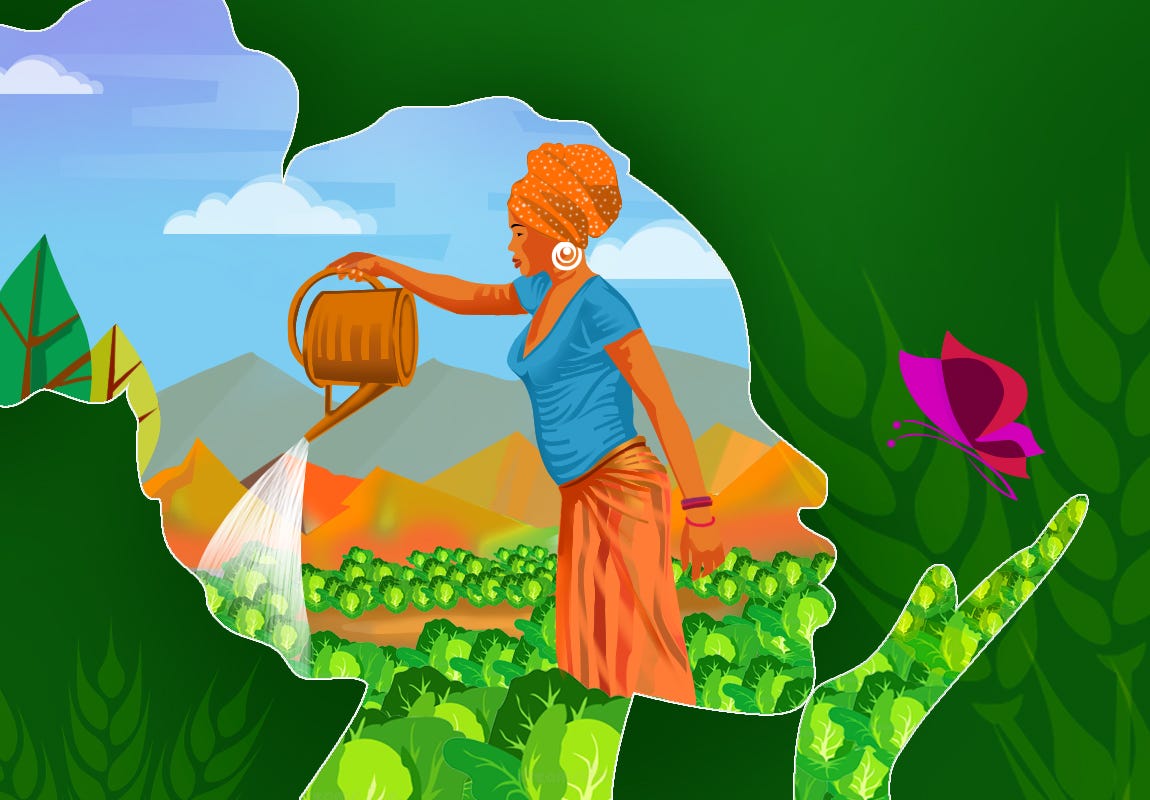The agricultural sector accounts for one-third of Africa’s GDP and two-thirds of African citizens depend on agriculture for their livelihood. The sector is believed to have the capacity to reduce poverty on the continent as well as promote social growth. Investing in agriculture does not only increases the potential of the continent to feed its ever-growing population but also lift them out of poverty. According to the study “Levelling the Field” by World Bank and One Campaign, the growth in this sector is 2 to 4 times effective in eradicating poverty than the growth in other sectors.
However, the agricultural sector in Africa has not reached its full potential owing to different factors such as lack of investments and negligence by those who are responsible.
The gender gap that exists in the agricultural sector is one of the main obstacles that must be tackled in order to achieve significant growth. Even though the numbers of women workers is almost equal to men, the production is less compared to their male counterparts.
Studies conducted by World Bank in various countries across the countries in Africa show that women have to face several hurdles in utilising market, training, equipment, and opportunities. In addition, the strict code of conduct imposed on women by the social norms widens the gender gap further. Overcoming the barriers that hold back women is very important in bridging this gap and ensuring economic growth. This will enable women to contribute more to their family and society.
According to the study, a simple comparison of male and female productivity shows that the gap ranges from 13% in Uganda to a 25% in Malawi. This means that in Malawi, male-managed plots produce 25% more per hectare than female-managed plots.
The African population is likely to quadruple in the next 90 years and eliminating the gender gap will help increase food security and improve the livelihood of the people. The study by World Bank suggests that if the women around the world get the same access to the means of production as men, farm yields are likely to increase by 20%-30%, resulting in the increase of total agricultural output by 2.5%-4%.
According to the report by World Bank and One Campaign titled “Levelling the Field”, female farmers consistently produce less per hectare compared to the male farmers. The study – conducted by World Bank in six African countries that comprise over 40% of sub-Saharan Africa’s population – shows the gender gap existing in the agricultural sector. According to the study, a simple comparison of male and female productivity shows that the gap ranges from 13% in Uganda to a 25% in Malawi. This means that in Malawi, male-managed plots produce 25% more per hectare than female-managed plots.
This report also suggests that the gender gap is caused not only by unequal access to inputs but also unequal returns to the input they have. Previous studies have suggested that the reason for the gender gap is the unequal access to inputs. If women are given better access, they will be equally productive. The recent study analysed the returns that women receive from these resources. Even when women have equal access to inputs, it does not reflect in the productivity – this points to the institutional constraints or market failures that alter the effectiveness of these resources.
Agriculture in Africa heavily depends on manual labour, and this is the main barrier to achieving equality in productivity. Women face many difficulties in mobilising extra help to work on their farms. Women have unequal access to many productive inputs like high-quality fertilisers and improved seeds, resulting in decrease in production. The gender gap in education that was prevalent in the previous decades continues to affect female farmers today. Focusing on these key drivers will both enhance gender equality and foster economic growth.
Narrowing the gender-gap in African agriculture
Policy priorities suggested by the report titled “Levelling the Field” by World Bank and One Campaign regarding the key drivers of gender gap includes:
• Strengthening women’s land rights: Formalising land rights through registration, expanding individual titling for women, and reforming inheritance laws to protect women’s right are crucial in strengthening women’s land rights.
• Improving women’s access to hired labour and machinery: Improving women’s access to hired labour by offering finance and tasking agents to help female farmers to find labour is important. Providing finance or discounts to buy machinery will enhance women’s use of tools and equipment that reduce the amount of labour they require on their farm.
• Encouraging women’s access to higher-quality fertilisers and improved seeds: Encouraging female farmers to use higher-quality fertilisers and helping them identify and obtain better-quality seeds are important in bridging the gap in non-labour inputs.
• Spreading agricultural knowledge: Making agricultural training and advice more accessible to women and assigning agents to spread information within women’s social networks.
• Facilitating women’s access to markets: Providing market services through information and communication technology and channelling existing groups to access market opportunities.
• Human capital: Raising education levels of adult female farmers.
Now put on your thinking hats and think about the following questions for a couple of minutes. Can you think of the reasons for the low productivity of women farmers in your immediate community?
In your opinion, do you think implementing gender-neutral policies will help in bridging the gap between men and women farmers?
Can you think of the ways in which we can reduce the gender gap in agricultural sector?
Write down your thoughts and discuss them with your students, children and your colleagues. Listen to their views and compare them with your own. As you listen to others, note how similar or different your views are to others’.
Thank you for listening. Subscribe to The Scando Review on thescandoreview.com.
Happy Teaching!














African Model of Social Growth and Gender Equality